Happy Halloween, my pretties! I hope you’re enjoying the season of candy corn, razor blade apples and wildly false campaign ads. Oh, and btw England: you didn’t need to go QUITE so funhouse surreal last week, but I greatly appreciated the effort.
As always, I never know where I’m going to go with these newsletters, and themes often evolve on their own as I meander around the internet. This year, a variety of skulls decided to make themselves known, and I went with it — even though I think the motif has been bludgeoned to death in the Etsy Age. But these skulls at least have some real age, symbolism, or charm to them, and I’ve also thrown some other interesting little bits into the mix. So, without further ado!
This silver skull watch above is known as the “Mary Queen of Scots watch,” because it was long believed to have been gifted by Mary, on the day of her execution in 1587, to one of her long-serving maids of honor. It’s a great story, but unfortunately the provenance doesn’t hold up (or, rather, it doesn’t even exist), and it’s now thought that this watch was actually one of three created in the late 18th or early 19th century. So still old, but not quite THAT old.
It’s in the collection of the Worshipful Company of Clockmakers in London, and they note that it was “probably created as an early manifestation of the ‘Romantic Revival.’”
The death’s head watches that inspired it were memento mori (“remember you must die”) pieces popular in the 16th and 17th centuries. I know I’ve covered this before, but here’s a little background for anyone who may be new to Dearest: Memento mori items were worn to remind their wearers/owners to live a virtuous life, because death was always just around the corner. Rings, rosary beads and other smaller items were popular vehicles for the theme, but watch movements were particularly ideal, as they literally marked the passage of time and inevitability of death. (Memento mori jewelry eventually evolved in the 18th and 19th centuries into mourning jewelry, which memorialized deceased loved ones while recycling a lot of the same morbid imagery.)
Of course the skull motif was also a no-brainer (lololololol sorry) as an obvious symbol of death, and a number of original death’s head watches have survived to the present day, including this ca. 1660 German one in the collection of the British Museum.
Text relating to mortality and piety was often woven into memento mori pieces — usually via engraving or enameling — and imagery included biblical scenes, hourglasses, scythes, etc. The Mary watch incorporates engravings of Adam & Eve, a skeleton, an ouroboros and even a scene of Saturn devouring his children. Latin quotations from Horace snake around the piece, with one stating “pale Death visits with impartial foot the cottages of the poor and the palaces of the rich.”
You can click through on the original link to see the interior mechanism of the watch, which opens at the jaw. It’s signed ‘Moysant, Blois,’ and it’s really quite lovely if you overlook all the baby-eating.
This absolutely wonderful 19th century Japanese netsuke is in the collection of the Metropolitan Museum of Art, and they describe it as: “Netsuke of Ghost Trying in Vain to Frighten Blind Man.”
I talked about netsuke in my Halloween Bats! edition back in 2020, but tl;dr: they were originally tiny sculptural toggles used in traditional Japanese dress that later evolved into objects of pure artistry and craftsmanship. This one is made of wood and dates to either the Edo (1615–1868) or Meiji period (1868–1912).
Circa 1610, this gold memento mori ring features a central carved white enamel skull with a black enamel motto around the bezel stating, “watch thy houre cometh.” It sold in a Christie’s London auction back in 2016 for £21,250 ($24,000).
There’s quite a lot of folklore about stag beetles. Humans have been fascinated with them since the days of the ancient Egyptians, and Greek mythology features the tale of Cerambus, grandson of Poseidon, who played a lyre that was shaped like the head and mandibles of a stag beetle. He was a great musician but also a bit of a dick, so some nymphs eventually turned him into a stag beetle and left him to wander the woods alone.
Pliny the Elder mentioned in his Natural History that stag beetles were “suspended from the neck of infants by way of remedy against certain maladies,” and according to British and German folklore, they could either summon thunder and lightning storms or protect you from them (just wear one on your hat and you’re good!). The French wore them to attract wealth and the Romanians thought their horns could ward off the evil eye — the women even went so far as to wear them in their braids.
In addition to all the folklore, a style trend for beetles arose in the 19th century, as the Victorians obsessed over new discoveries in the natural world and often wore insect jewelry alongside their species-decimating bird jewelry and feathered fashions. The styles ranged from highly realistic, exquisitely jeweled or entirely natural — like the Victorian pendant above, which features the actual head and mandibles of a stag beetle set in a gold-plated mount. It’s available from London dealer The Day Before Today for $365.
This nearly 400-year-old enameled gold and ruby toothpick is another fantastic example of a memento mori piece. Fashioned in the shape of an arm holding the sickle of Father Time, it also features a grinning skull finial that, combined with the sickle, would serve to remind its wealthy owner of their mortality.
The toothpick is in the collection of the Victoria & Albert Museum in London, and the museum thinks it was possibly made in England sometime around 1630-60. The date and the utility of the piece lead them to ask an interesting question, though. Usually these memento mori items were small personal pieces, like the ring above, or slides that were worn on ribbons. But this is a toothpick, of all things. So the V&A asks:
Would people who enjoyed William Shakespeare (1564-1616) or the ingenious poetry of John Donne (1572-1631) perhaps also have had a wry smile about the clever idea of picking their teeth with Father Time's sickle? Might they even have enjoyed the paradox that picking their teeth with the Grim Reaper's sickle would actually slow down decay?
Thumbing their nose at death with a tiny ornate toothpick. I LOVE IT.
I told you guys about one of my favorite living jewelers — the genius fourth-generation Venetian jeweler Attilio Codognato — back in 2020, and here is another ring of his that’s a bit more overt than that last one. Circa the 1980s, this silver-gilt ring features a carved bone skull set with a single round brilliant-cut black diamond eye. It’s included in the Rago Fall Jewelry auction on Wednesday and carries an estimate of $4,000–6,000.
This lethal-looking spike — a.k.a. the Javelin Ear Cuff by Italian designer Marco Rigovacca — is one of my most favorite pieces of jewelry. I featured one of them in my column for the Hairpin back in 2012 and I’ve never forgotten it, so when another one popped up a few weeks ago in the “Art as Jewelry as Art” online auction at Sotheby’s, I clicked through with great speed to see what kind of an estimate it had. And then I literally did a cartoon spit-take, because there was MY NAME, with my column listed as the single “Literature” reference. Which gave me a happy little flush of excitement immediately followed by a “NO! Don’t cite me! I’m an idiot!” panic attack. Ah well. Thanks, Sotheby’s — despite my brain gremlins, that was still a nice little moment.
But anyway, back to the topic at hand. Marco Rigovacca was one of the artists of the “Padua School,” a group of goldsmiths and jewelers trained in the second half of the 20th century at the Istituto Statale d’Arte Pietro Selvatico in Padua, Italy. Following an approach to design that was first established at the institute in the 1800s, the students were encouraged to treat jewelry as sculpture, and their unconventional work eventually drew international attention.
This Javelin earring was designed by Rigovacca in 1986. If you click through on the original link, you can see the piece on a model. The spike appears to pass directly through the ear, but it’s actually split into two parts, with a hidden connector that goes behind the ear.
This French gold, enamel and diamond stick pin dates to 1867 and was originally animated! It has built-in electrical terminals that connected via a tiny wire to a battery concealed in the wearer’s pocket. The battery could then be secretly manipulated to make the skull’s eyes roll and the jaws clack.
The piece was invented by French electrical engineer Gustave Trouvé and crafted in Paris by Auguste-Germain Cadet-Picard. The one shown above is in the collection of the Victoria & Albert Museum and, sadly, it no longer works — but back in 2015, New York dealers A La Vieille Russie sold a working one, and you can see it in action on their Instagram page:
Trouvé designed a series of these tiny battery-operated electric jewels, and A La Vieille Russie’s blog post on the piece notes the public reaction to their debut at the Paris 1867 Exhibition:
Jeweler Henri Vever described them as ‘jewels of near-terrifying originality’ and the English publisher Henry Vizetelly wrote,
but the most absurd of all, was a small death’s head connected by a wire with a Lilliputian battery carried in the pocket, enabling the death’s head to distend its jaws and close and open them at the wearer’s pleasure, greatly to the bewilderment of anyone not in the secret.
Technical illustrations and ads for some of Trouvé’s other animated jewels are featured in that A La Vieille Russie post, and among many others, they included a hummingbird with moving wings, a bunny beating a cymbal, and two tiny ballet dancers on a stage. Unfortunately, not many were made — there just weren’t enough craftsmen around with the technical skills to create them — so the few existing pieces very quicky became collector’s items.
This Victorian sterling silver-mounted coconut sander by London silversmiths Charles Green & Son is one of the most extraordinary things I’ve ever seen. It dates to 1878 and was included in the October 20 English & Continental Silver, Vertu & Fabergé sale at Doyle, but it didn’t sell. Nobody wants interesting murder weapons anymore, I guess. *sigh*
Ok, that’s it. I did have a horrendous clown charm that I was going to include, but I’ve run out of space, and we already deal with enough clowns on a day-to-day basis. I hope you enjoy the rest of your week — let me know if you’re cooking up any good costumes for the weekend!
M xx




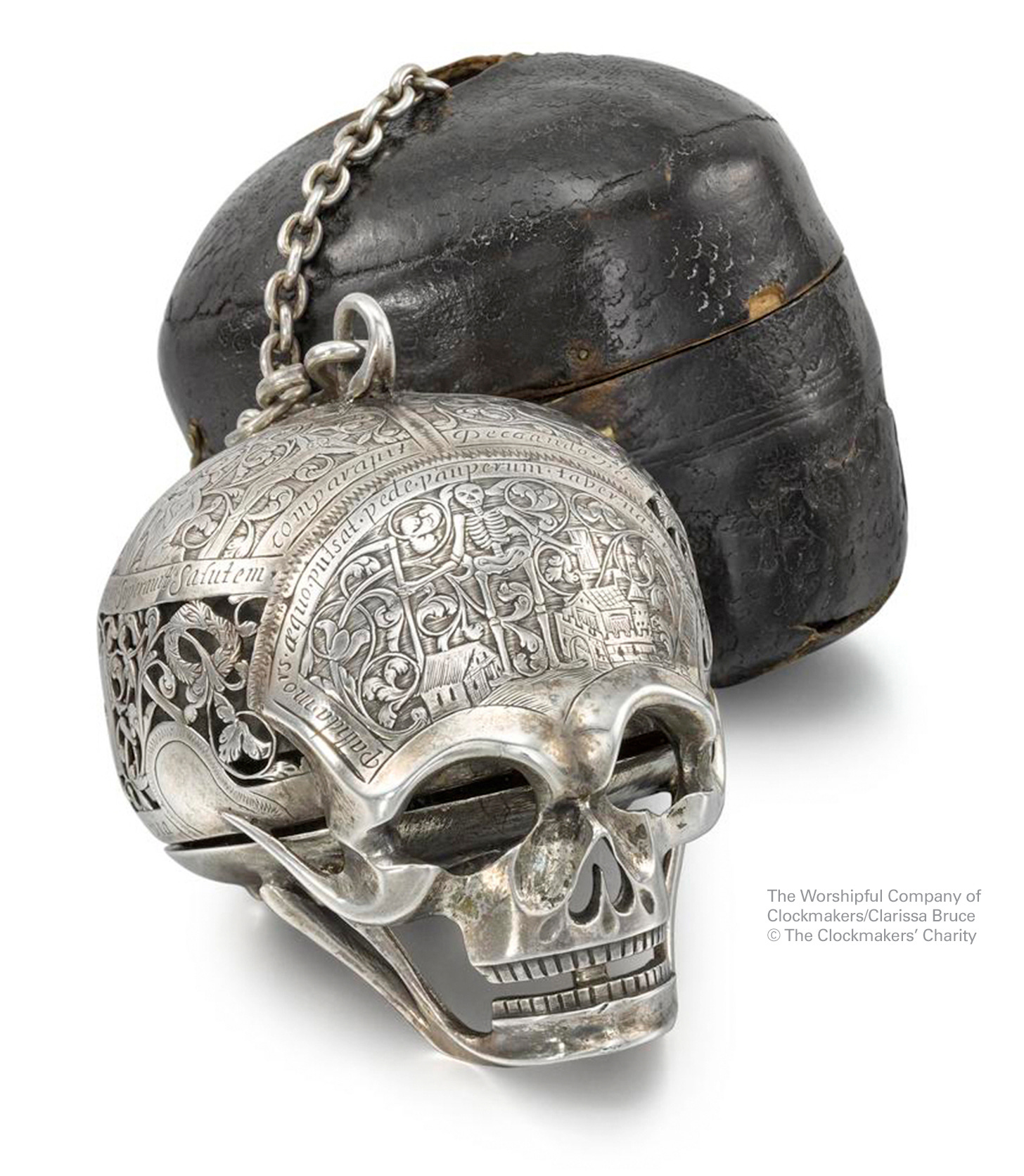
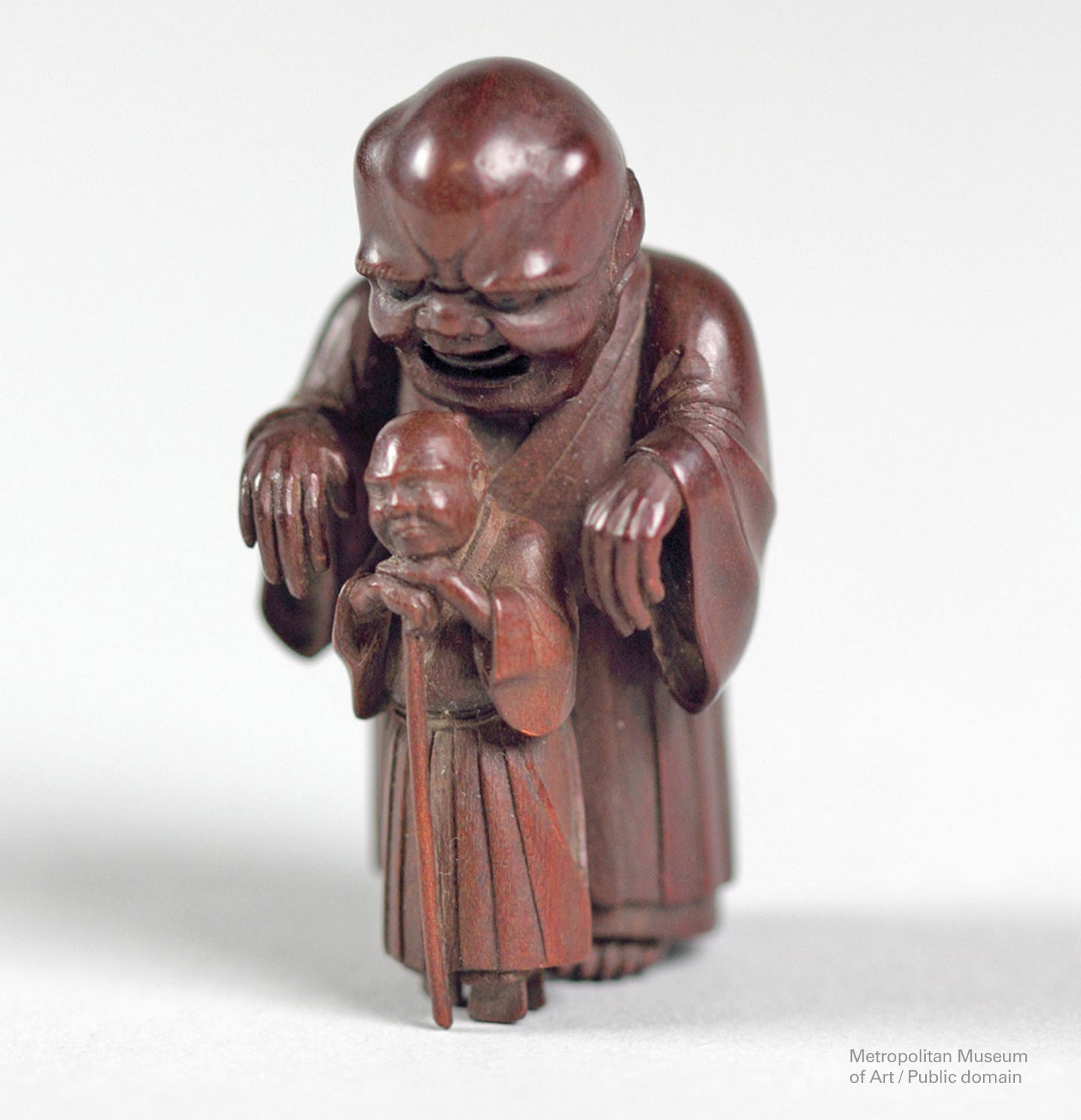
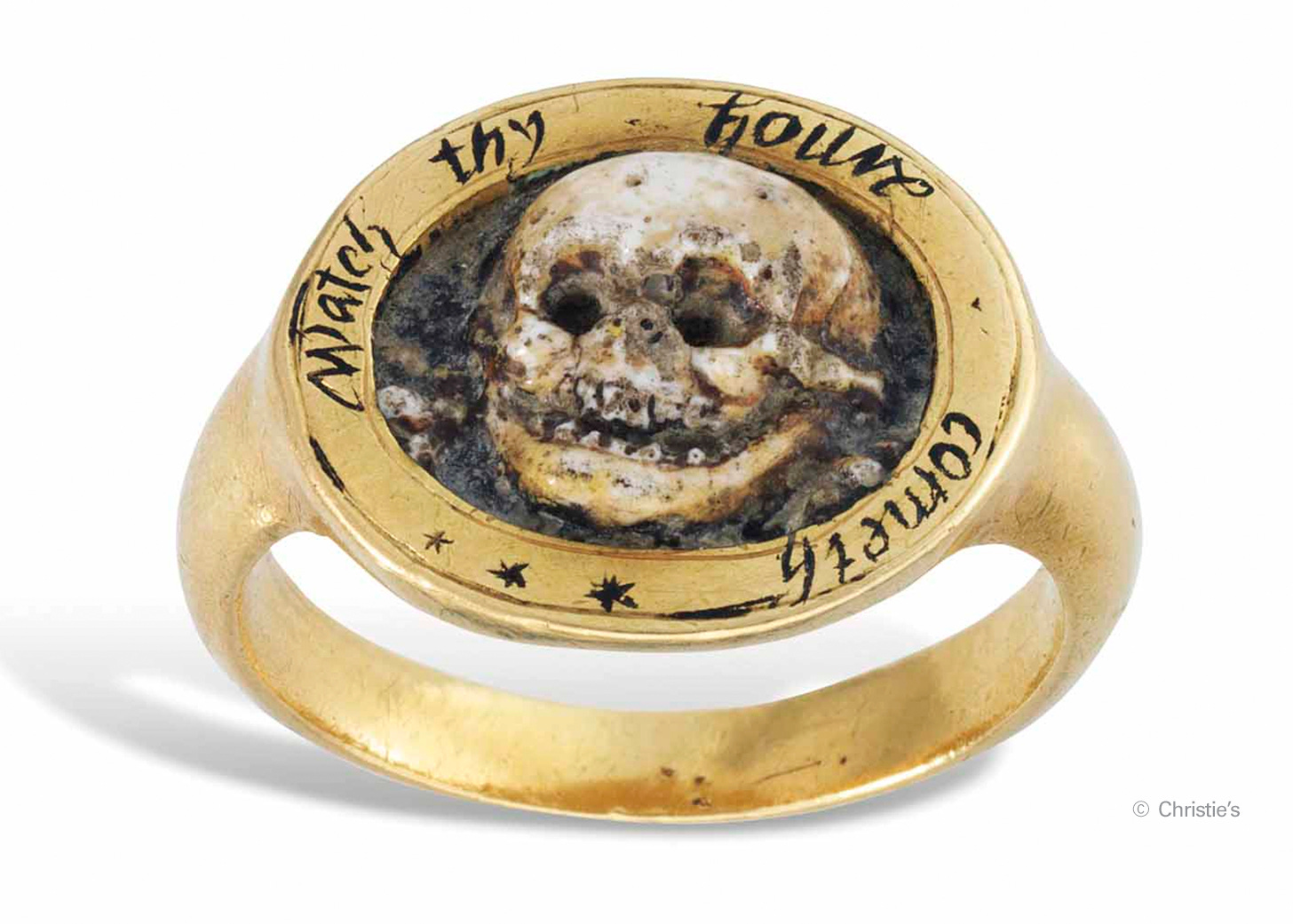
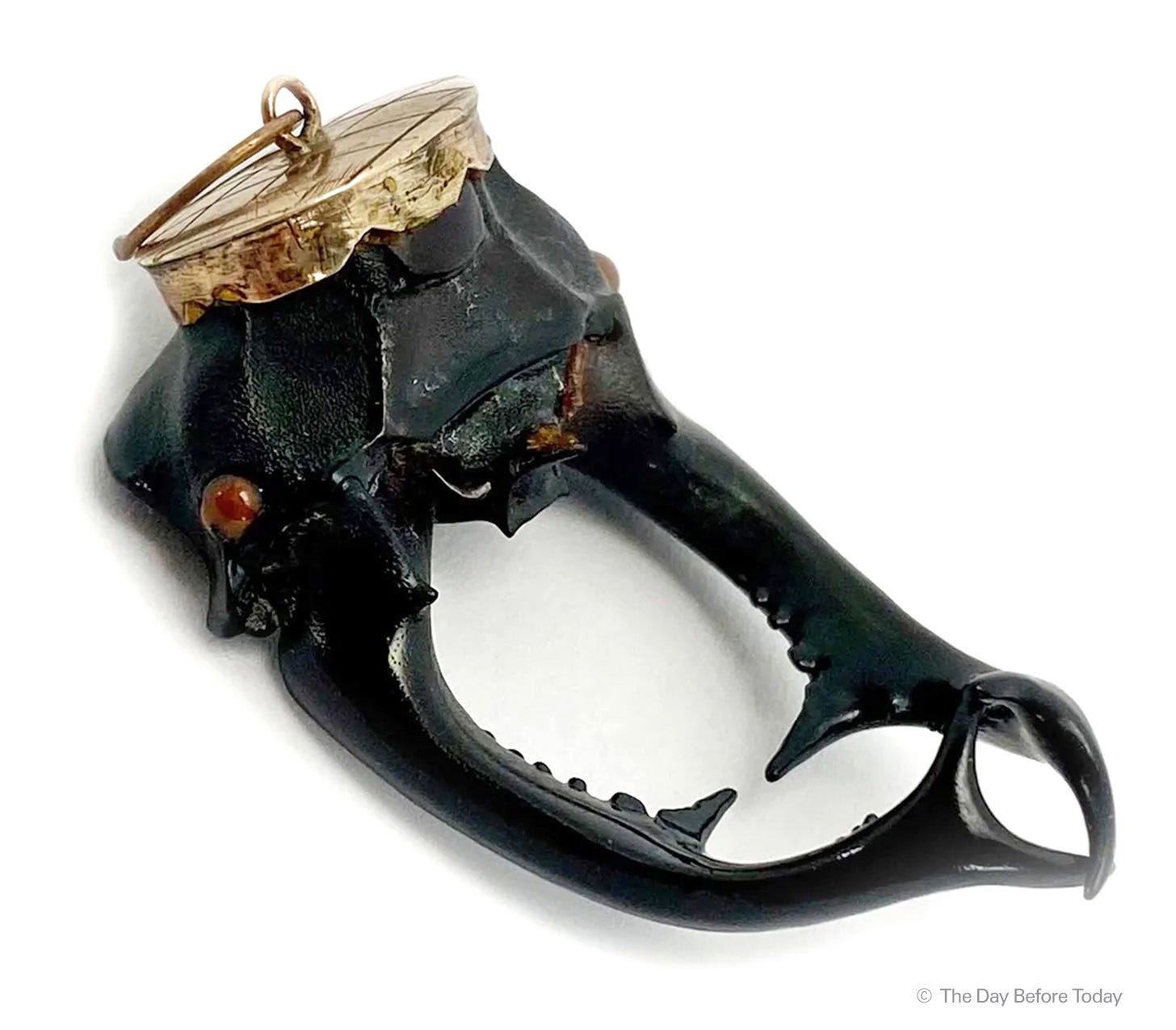

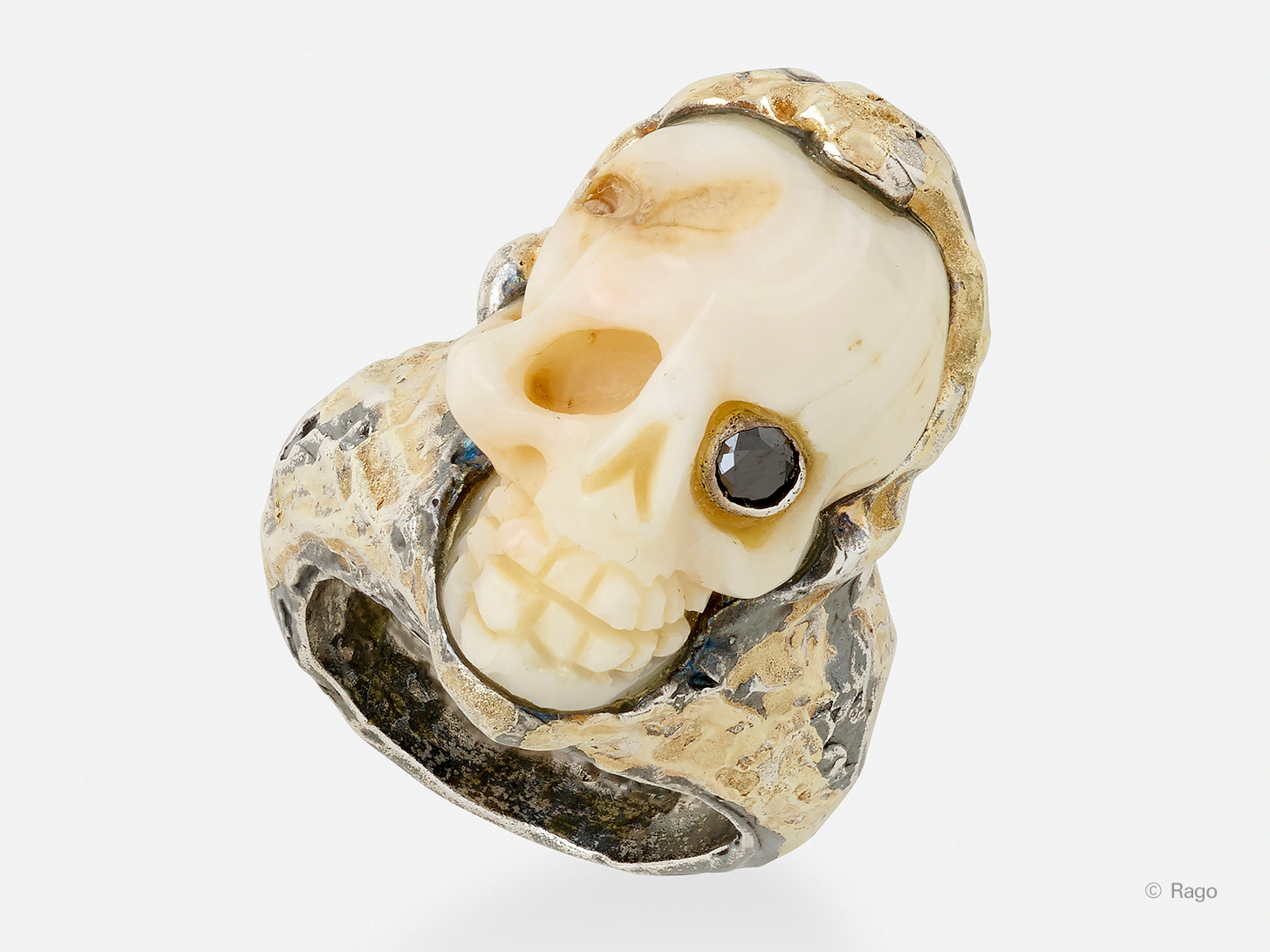
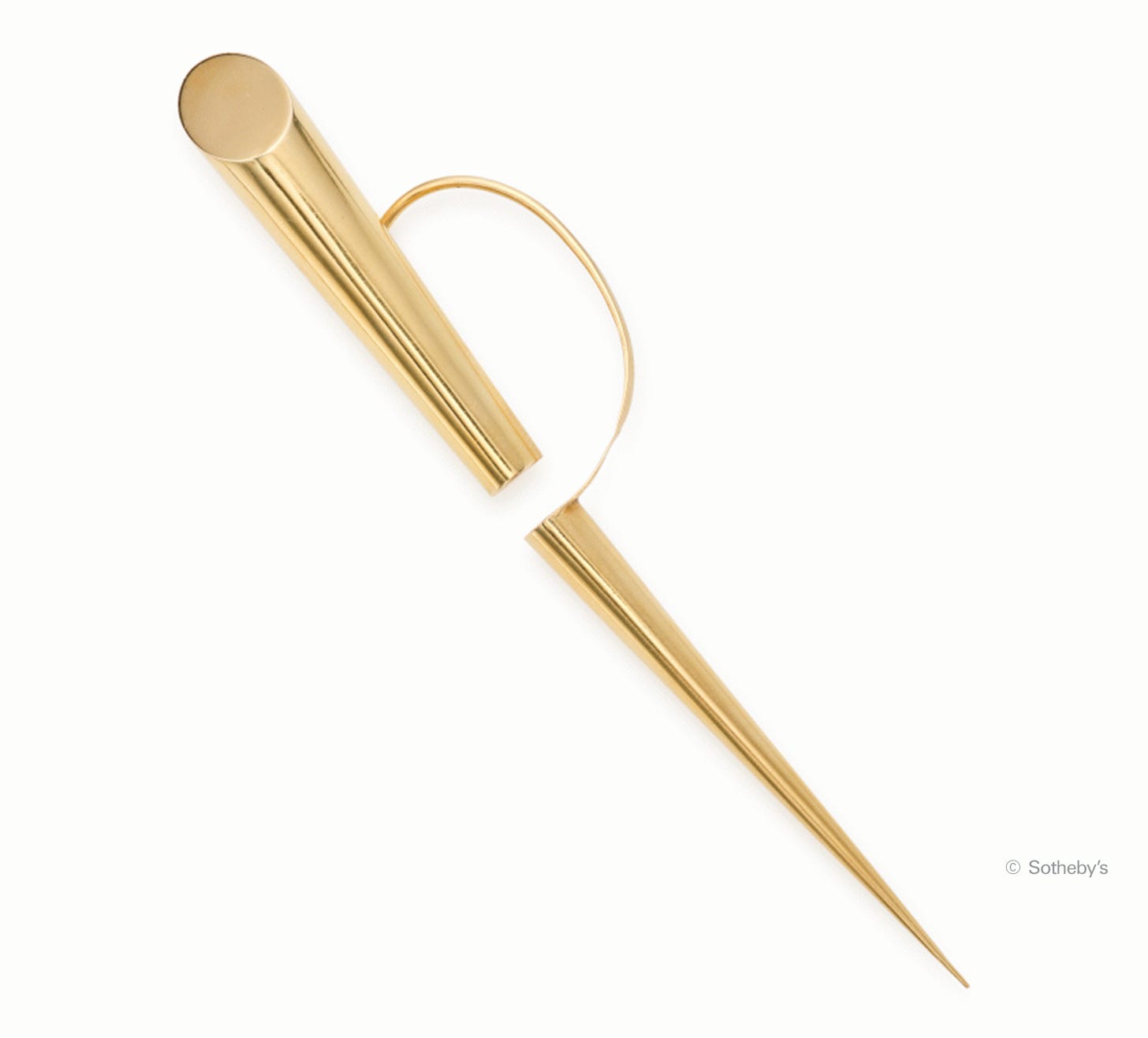



That mouldering 'watch thy houre' skull is sooo haunted.
Thank you so much for the spooky newsletter - can you add some info on the coconut sander? What on earth is it? Do you use it to sprinkle sand on wet ink? To bludgeon someone? I tried googling it but only got redirected to your newsletter and to the auction site. Inquiring minds want to know!